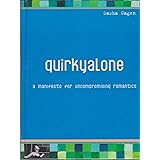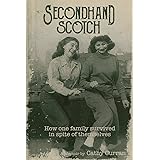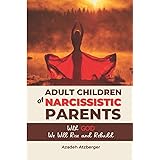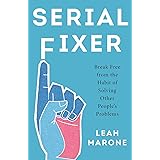In the video above, key strategies for gaining control over compulsive buying habits are introduced, providing a vital starting point for those grappling with shopping addiction. Taking proactive steps to identify triggers and cultivate healthier alternatives is fundamental. Let’s delve deeper into these critical areas, offering a more nuanced understanding and advanced strategies for managing and ultimately overcoming compulsive spending.
Understanding the Complex Web of Compulsive Buying Triggers
Compulsive buying, often recognized in clinical contexts as oniomania, is a behavioral pattern characterized by an irresistible urge to purchase items, despite potential harmful consequences. Identifying the specific stimuli that initiate this impulse is the first, often most challenging, step toward remediation. The video correctly highlights internal states such as low self-esteem, depression, and boredom as significant emotional triggers, which are frequently reported by individuals experiencing this condition. Estimates suggest that a notable percentage of the adult population globally grapples with some form of compulsive buying, impacting both financial stability and mental well-being.
However, triggers can be multifaceted, extending beyond internal emotional states to encompass situational, cognitive, and environmental factors. Imagine if every time you received a promotional email from a beloved brand, an unshakeable urge to browse and buy took hold. This scenario vividly illustrates how external cues can powerfully influence behavior, often bypassing rational deliberation entirely. These external triggers, ranging from targeted advertisements to social media trends displaying new products, frequently tap into pre-existing internal vulnerabilities, making resistance particularly difficult.
Deconstructing Emotional and Situational Catalysts
Emotional triggers are indeed pivotal in the cycle of compulsive buying. Individuals struggling with this condition frequently report a temporary emotional lift, a fleeting sense of power, or even excitement immediately following a purchase. This sensation, often referred to colloquially as “retail therapy,” typically dissipates quickly, leaving behind feelings of guilt, shame, or renewed distress. For instance, profound feelings of loneliness or inadequacy can manifest as a desperate need to acquire objects, aiming to fill an emotional void or enhance perceived social standing. The brain’s dopamine reward circuitry plays a significant role here, reinforcing the purchasing behavior as an immediate, albeit maladaptive, coping mechanism.
Situational triggers are equally influential and require diligent observation. Consider the powerful impact of habitually passing a favorite boutique or scrolling through online marketplaces after a particularly stressful day at work. The specific environment itself, coupled with an already elevated stress level, can create a perfect storm for impulse buying. Furthermore, the ubiquitous accessibility of online shopping platforms means that the “situational” trigger can now be activated anytime, anywhere, exacerbating the challenge of developing effective impulse control. Proximity to shopping environments, whether physical or virtual, significantly increases an individual’s exposure to potential buying triggers.
Cultivating Robust Alternative Coping Mechanisms
Once specific triggers for compulsive buying are identified, the strategic replacement of destructive shopping habits with constructive, healthier alternatives becomes paramount for sustained recovery. This process is not merely about substituting one activity for another; it involves a fundamental shift in how one seeks fulfillment and manages difficult emotional states. The video insightfully suggests engaging in a new hobby or incorporating more exercise into daily routines, and these are undeniably excellent starting points for initiating cognitive restructuring and behavioral change.
For instance, deeply engaging in creative pursuits such as painting, learning a musical instrument, or committing to a writing project can provide a genuine, intrinsic sense of accomplishment and self-expression. These activities directly address underlying feelings of boredom, low self-esteem, or even a lack of purpose. Physically demanding activities, ranging from structured gym workouts to long, mindful walks in nature, consistently release endorphins, which naturally elevate mood and effectively reduce stress levels. In addition, consider the profound psychological impact of volunteering or actively engaging in community work. These activities foster genuine social connections and provide a sense of greater purpose, directly countering the feelings of isolation and emptiness often associated with compulsive buying.
Implementing Proactive Self-Regulation Strategies
Developing effective self-regulation strategies is critical for sustaining these new, healthier habits and preventing relapse into compulsive spending. This involves intentionally building a diverse repertoire of specific, actionable responses to deploy when the overwhelming urge to shop arises. One highly effective technique is “urge surfing,” which involves mindfully acknowledging the craving without immediately acting on it, observing its intensity and transience, much like watching a wave rise and fall without being swept away. This mindfulness practice helps to decouple the initial urge from the automatic, habitual purchasing response.
Moreover, proactive environmental restructuring can significantly mitigate an individual’s exposure to known triggers. Deliberately unsubscribing from all marketing emails, unfollowing tempting retail accounts on social media, and even temporarily deleting shopping applications from your smartphone can create valuable friction in the purchasing process. Imagine cultivating a digital and physical environment specifically stripped of constant consumer temptations; this strategic move can substantially reduce the cognitive load and willpower required to resist an impulse. This deliberate reduction in exposure makes it considerably easier to consistently engage with your chosen, healthier alternatives.
Mastering the Art of Delayed Gratification
The practical advice to “wait it out” before making any purchase is a cornerstone strategy for effectively overcoming compulsive spending. This technique directly challenges and aims to dismantle the immediate gratification cycle that so powerfully fuels shopping addiction. The primary goal is to intentionally create a conscious pause—a critical window of opportunity—allowing the initial intensity of the impulsive urge to significantly subside and thereby enabling more rational, deliberative decision-making processes to take over.
Implementing a mandatory waiting period, for example, a fixed duration of 24 to 72 hours, for any non-essential purchase can prove to be highly effective in practice. During this designated interval, consciously engage in an alternative, fulfilling activity – perhaps a new hobby or strenuous exercise, as previously discussed. This busy work actively diverts attention and mental energy away from the shopping impulse. Furthermore, utilize this crucial time to critically evaluate the genuine necessity of the item. Ask yourself: Is it truly a need or merely a fleeting want? Does acquiring it align with your long-term financial goals and personal values? It’s a well-documented observation that a significant percentage of items desired impulsively lose their magnetic appeal after this enforced waiting period, clearly revealing the transient nature of the initial craving.
Cognitive Restructuring and Financial Awareness
Beyond simply waiting, actively engaging in cognitive restructuring during this delay period is immensely beneficial for long-term behavioral change. Challenge the underlying, often irrational, thoughts that fuel the purchasing urge. For instance, if the prevailing thought is “This new gadget will finally make me happy and complete,” reframe it to “True and lasting happiness stems from internal contentment and meaningful relationships, not from external material possessions.” This consistent mental practice systematically weakens the automatic cognitive link between purchasing and genuine well-being. Furthermore, cultivating a deeper and more transparent understanding of your personal financial landscape can act as an incredibly powerful deterrent against compulsive buying.
A comprehensive, diligently maintained personal budget, for instance, provides a crystal-clear picture of your income and expenses, starkly highlighting the real financial impact of discretionary spending. Regularly reviewing bank statements, meticulously tracking all purchases, and utilizing budgeting applications can collectively create a robust accountability framework. When you visibly observe the tangible financial drain caused by accumulating unneeded items, the intrinsic motivation to control compulsive spending naturally and significantly increases. Many individuals find that simply the act of mindfully observing their spending patterns through a budgeting app helps to proactively curb impulsive actions, offering a clear, data-driven perspective on their habits and progress in managing compulsive buying behaviors.
Seeking Professional Guidance for Lasting Change
While self-help strategies are undeniably invaluable and constitute a critical first line of defense, it is important to acknowledge that compulsive buying often stems from deeper, more complex psychological issues. For some individuals, the persistent battle against shopping addiction genuinely requires professional intervention and specialized guidance. Therapeutic approaches, such as Cognitive Behavioral Therapy (CBT), can provide structured, evidence-based methods to systematically identify distorted thought patterns and develop more adaptive, healthy coping skills. CBT specifically helps individuals to fundamentally reframe their relationship with shopping and vigorously challenge the automatic negative thoughts that frequently precede an overwhelming buying spree.
Other forms of psychotherapy can also be instrumental in addressing underlying issues such as chronic anxiety, persistent depression, or unresolved past trauma, which frequently co-occur with compulsive spending behaviors. Group therapy settings, in particular, offer a uniquely supportive and empathetic environment, allowing individuals to openly share their personal experiences, struggles, and effective strategies with others facing similar challenges. This shared experience significantly reduces feelings of isolation and profound shame. This integrated approach, combining proactive self-help strategies with expert professional guidance, often yields the most sustainable, profound, and transformative results in effectively managing and ultimately overcoming compulsive buying.











